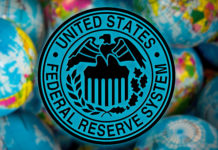The Consumer Price Index fell 0.1% month-on-month (m/m) in December, slightly below expectations calling for a flat reading. On a year-on-year (y/y) basis, headline inflation fell to 6.5% (down from 7.1% the month prior).
Energy prices declined by 4.5% m/m, entirely due to a sharp drop in gasoline (-9.4%% m/m) prices. Energy services (+1.5% m/m) were higher on the month.
- Food prices (+0.3% m/m) continued to decelerate – having slowed in each of the last five months – but are still up 10.4% over the last twelve months.
Core inflation (excludes food & energy) rose 0.3% m/m – a modest acceleration from the month prior. Relative to last December, core is up 5.7% (down from 6.0% the month prior).
Price growth across services (+0.5% m/m) accelerated in December. This was led by an acceleration in shelter costs (+0.8% m/m), with both rent and owner’s equivalent rent up 0.8% m/m. Lodging away from home (+1.5% m/m) was also higher.
- Other service categories including recreational (+0.3% m/m), education & communication (+0.3% m/m) and transportation (0.2% m/m) services also rose on the month.
Core goods prices (-0.3% m/m) declined for the third consecutive month. Declines were again concentrated in used vehicle prices (-2.5% m/m), but new vehicle prices (-0.1% m/m) also turned lower.
Key Implications
Another encouraging reading on CPI to round out 2022. Despite the core measure showing a modest acceleration last month, the three-month annualized change eased to 3.1% – marking the sixth consecutive month of deceleration.
Goods prices have turned quickly in recent months and have been a key factor in why core inflation has recently cooled. However, at just over 25% of the core CPI basket, weaker goods prices alone can only get inflation down to somewhere in the 3%-4% range. The rest of the heavy lifting will need to come from weaker price growth for services, and this is unlikely to happen so long as wage growth continues to run at a near 5% pace.
This is the last inflation report Fed officials will see before the next interest rate announcement in early-February. We suspect today’s reading on inflation supports a smaller 25bps hike, as the FOMC now tries to gauge the cumulative impact of all the tightening done to date.












